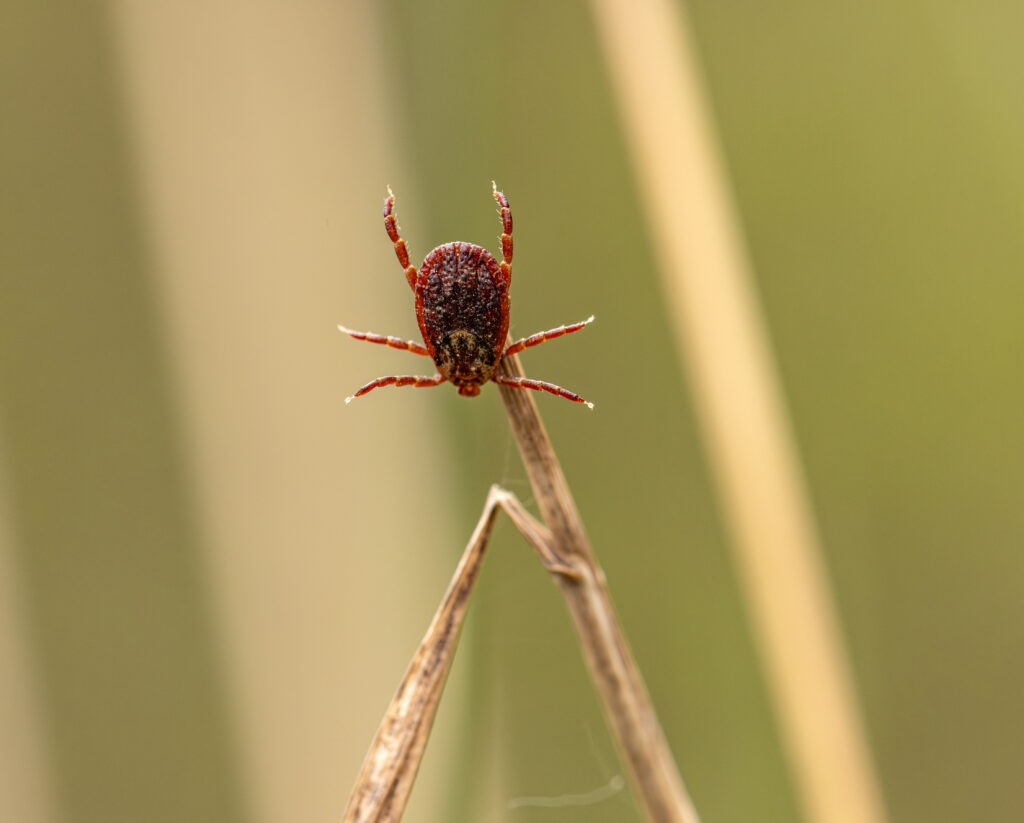Spring is a beautiful season, with flowers blooming, warmer weather, and more outdoor activities. However, it’s also the time when ticks become more active, and with them comes the risk of Lyme disease. Residents in Amesbury, Newburyport, Hamilton, Wenham, and other surrounding towns in Massachusetts are especially prone to tick-related issues due to the area’s natural landscape. Fortunately, there are proactive steps you can take to reduce the risk of tick bites and the potential spread of Lyme disease.
In this blog post, we’ll discuss how to prevent ticks this spring and provide tips on how Safer Nature Pest Control can help protect your home and family from these dangerous pests.
Why Are Ticks a Concern in Spring?
Ticks thrive in warmer months, especially during the spring and summer. They are commonly found in grassy, wooded, or brushy areas, making yards and gardens popular spots for them to hide. As ticks search for hosts, they can attach to animals or humans, transmitting Lyme disease and other illnesses like Babesiosis or Anaplasmosis.
According to the Centers for Disease Control and Prevention (CDC), Lyme disease is one of the most common tick-borne illnesses, and it’s important to take preventative measures during peak tick season to avoid exposure.
How to Prevent Ticks and Lyme Disease in Your Yard
1. Create a Tick-Free Zone
The first step in tick prevention is creating a tick-free zone around your home. This means clearing brush, tall grass, and leaf litter from areas where you and your pets typically spend time. Ticks love to hide in tall grass and shrubs, so maintaining a neat and tidy lawn is crucial.
Tip: Use a lawn mower to keep your grass short, and trim any overgrown bushes, trees, or shrubs that could harbor ticks.
2. Use Safe, Eco-Friendly Pest Control
At Safer Nature Pest Control, we believe in using natural, chemical-free pest control solutions to eliminate ticks in and around your property. Our eco-friendly treatments are designed to be safe for your family, pets, and the environment, while still being highly effective at controlling tick populations.
3. Create a Barrier Between Your Yard and the Woods
Since ticks are often found in wooded areas, it’s a good idea to create a physical barrier between your yard and any surrounding woods. You can do this by adding a gravel or mulch barrier around the perimeter of your property. This will help deter ticks from moving from wooded areas into your yard and onto your lawn or garden.
Tip: A 3-foot wide barrier of gravel around your lawn will make it difficult for ticks to move between wooded areas and your home.
4. Tick-Proof Your Pets
Pets are one of the most common hosts for ticks, so it’s important to protect your furry friends. Make sure your pets are using tick preventatives, such as collars, spot treatments, or oral medications. Regularly check your pets for ticks, especially after outdoor activities, and remove any ticks you find using fine-tipped tweezers.
Tip: Bathe your pets frequently and inspect their fur for ticks after they’ve been outside, especially in areas with tall grass or bushes.

5. Wear Protective Clothing When Outdoors
When spending time outdoors, especially in areas known for ticks, make sure to wear protective clothing. Long-sleeved shirts, pants, and socks can help reduce the likelihood of ticks attaching to your skin. It’s also a good idea to wear light-colored clothing, so ticks are easier to spot.
Tip: Tuck your pants into your socks and your shirt into your pants to create a physical barrier that makes it more difficult for ticks to crawl onto you.
6. Tick Checks After Spending Time Outdoors
If you’ve spent time in a tick-prone area, always perform a tick check on yourself, your children, and your pets as soon as you come indoors. Ticks are often very small and can be difficult to spot, so thorough inspections are important. Pay special attention to areas where ticks like to attach, such as underarms, around the ears, in the hair, and behind the knees.
What to Do If You Find a Tick
If you find a tick attached to your skin or your pet, don’t panic. Use a fine-tipped pair of tweezers to gently grab the tick as close to the skin as possible and pull it out in a steady, even motion. After removal, clean the bite area with rubbing alcohol, and dispose of the tick by placing it in a sealed container or flushing it down the toilet.
If the tick has been attached for several hours or if you’re unsure if it was a deer tick (the primary carrier of Lyme disease), contact your healthcare provider or veterinarian for further guidance.
How Safer Nature Pest Control Can Help
At Safer Nature Pest Control, we specialize in eco-friendly, chemical-free pest control services that help prevent ticks and protect your family and pets from the dangers of Lyme disease. We provide customized treatment plans that target tick populations in your yard, while ensuring your home stays safe and healthy.
We serve Amesbury, Newburyport, Hamilton, Wenham, and surrounding towns in Massachusetts, offering pet-safe pest control that effectively reduces tick populations and other outdoor pests.
Spring is the perfect time to start thinking about tick prevention and the risk of Lyme disease. By following these tips and partnering with Safer Nature Pest Control, you can ensure that your family and pets stay safe from ticks this season. Whether you need help with eco-friendly tick control or advice on how to protect your yard, we’re here to assist.

